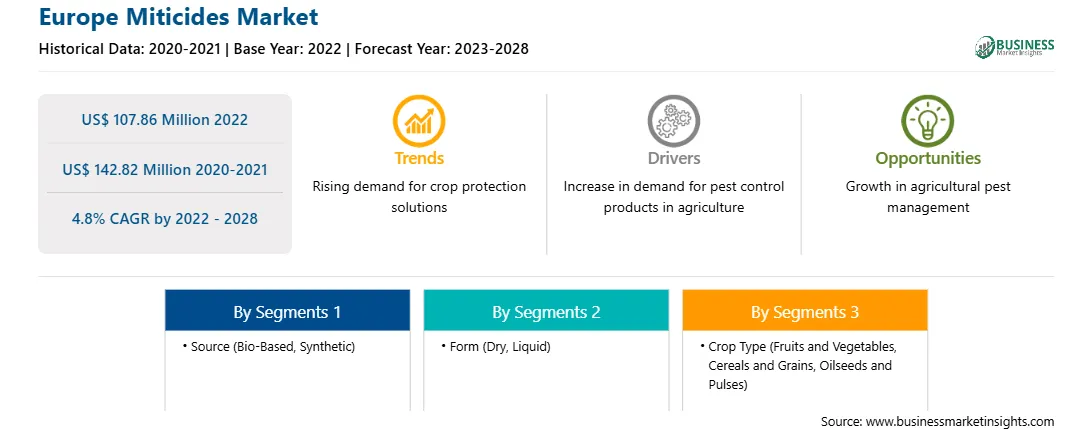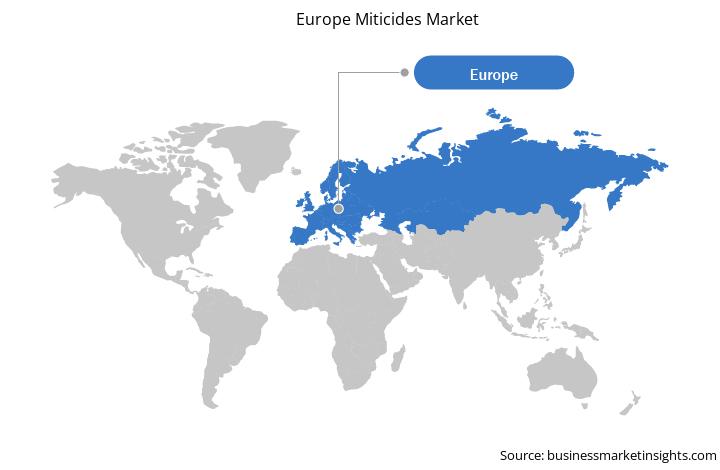For years, pesticides have been in use in an indiscriminate manner, destroying many of the natural adversaries of formerly innocuous species, along with swiftly inducing resistance in many parasites. Over the years, the green revolution has succeeded in part through the heavy use of chemical fertilizers and pesticides subsidized by governments. Many countries launched production support programs to stimulate agricultural production and achieve food self-sufficiency. Government subsidies resulted in the lower prices of fertilizers, resulting in their overuse, which not only burdened national fiscal positions but also caused environmental degradation. Thus, various countries began adopting bio-based alternatives to synthetic miticides to control environmental degradation. In September 2021, European Food Safety Authority (EFSA) proposed using lemon essential oil as a miticide, insecticide, and fungicide in fruit trees (citrus). An additional benefit of botanical oils is their different mode of action. For instance, rosemary oil alone has 20 pure compounds within it. One primary active ingredient targets octopamine, a nerve receptor that only insects have, which is safe for humans. These botanical oils and other bio-based miticides exhibit less toxicity to humans and low persistence in the environment. According to FAO, in Germany, the agricultural use of botanical insecticides increased to 25 tons in 2019 from 15 tons in 2018. For instance, in February 2020, Oro Agri launched its new Oroganic insecticide/acaricide at HortiContact in Gorinchem, the Netherlands. This plant protection product received approval from the Dutch Board for the Authorisation of Plant Protection Products and Biocides (CTGB) in 2019. Thus, the increasing popularity of organic agricultural produce and growing government efforts to develop bio-based farming practices are triggering the demand for bio-based miticides, which is likely to emerge as a significant trend in the Europe miticides market in the coming years.
The agricultural sector in Europe has been facing challenges in increasing productivity to feed the rising population across the region. Various European miticides manufacturers are increasing their dominance in crop protection products. Stringent guidelines by the European Union on environmental safety and support for organic farming propelled the demand for bio-based miticides in European countries, including Germany, Italy, Spain, and France. Miticides are primarily used to protect plants such as pome fruits, grapes, citrus, olives, cabbage, broccoli, cucumber, carrots, cauliflower, onion, eggplant, turf, flowers, and ornamentals from mites. In September 2021, European Food Safety Authority (EFSA) applied to use lemon essential oil as a miticide, insecticide, and fungicide to protect fruit trees (citrus). Furthermore, according to the United States Department of Agriculture, fresh apples, grapes, and pears production is forecasted to increase by 500,000 tons in 2021 to 12.8 million tons during 2022–2023. However, a severe attack of mites can reduce fruit growth and cause preharvest drops in certain varieties. These factors are expected to bolster the demand for miticides in Europe during the forecast period.
Strategic insights for the Europe Miticides provides data-driven analysis of the industry landscape, including current trends, key players, and regional nuances. These insights offer actionable recommendations, enabling readers to differentiate themselves from competitors by identifying untapped segments or developing unique value propositions. Leveraging data analytics, these insights help industry players anticipate the market shifts, whether investors, manufacturers, or other stakeholders. A future-oriented perspective is essential, helping stakeholders anticipate market shifts and position themselves for long-term success in this dynamic region. Ultimately, effective strategic insights empower readers to make informed decisions that drive profitability and achieve their business objectives within the market. The geographic scope of the Europe Miticides refers to the specific areas in which a business operates and competes. Understanding local distinctions, such as diverse consumer preferences (e.g., demand for specific plug types or battery backup durations), varying economic conditions, and regulatory environments, is crucial for tailoring strategies to specific markets. Businesses can expand their reach by identifying underserved areas or adapting their offerings to meet local demands. A clear market focus allows for more effective resource allocation, targeted marketing campaigns, and better positioning against local competitors, ultimately driving growth in those targeted areas.
Europe Miticides Strategic Insights

Europe Miticides Report Scope
Report Attribute
Details
Market size in 2022
US$ 107.86 Million
Market Size by 2028
US$ 142.82 Million
Global CAGR (2022 - 2028)
4.8%
Historical Data
2020-2021
Forecast period
2023-2028
Segments Covered
By Source
By Form
By Crop Type
Regions and Countries Covered
Europe
Market leaders and key company profiles
Europe Miticides Regional Insights

Europe Miticides Market Segmentation
The Europe Miticides market is segmented into source, form, crop type, and country.
Based on source, the Europe miticides market is bifurcated into bio-based and synthetic. In 2022, the synthetic segment registered a larger share in the Europe miticides market.
Based on form, the Europe miticides market is segmented into dry and liquid. In 2022, the liquid segment registered a larger share in the Europe miticides market.
Based on crop type, the Europe miticides market is segmented into fruits and vegetables, cereals and grains, oilseeds and pulses, and others. In 2022, the fruits and vegetables segment registered a largest share in the Europe miticides market.
Based on country, the Europe miticides market is segmented into Germany, France, the UK, Italy, Russia, and the Rest of Europe. In 2022, the Rest of Europe segment registered a largest share in the Europe miticides market.
BASF SE; Bayer AG; Certis USA LLC; FMC Corp; Gowan Co; Kemin Industries Inc.; Nihon Nohyaku Co. Ltd.; Oro Agri International BV; Syngenta AG; and UPL Ltd are the leading companies operating in the Europe miticides market.
The Europe Miticides Market is valued at US$ 107.86 Million in 2022, it is projected to reach US$ 142.82 Million by 2028.
As per our report Europe Miticides Market, the market size is valued at US$ 107.86 Million in 2022, projecting it to reach US$ 142.82 Million by 2028. This translates to a CAGR of approximately 4.8% during the forecast period.
The Europe Miticides Market report typically cover these key segments-
The historic period, base year, and forecast period can vary slightly depending on the specific market research report. However, for the Europe Miticides Market report:
The Europe Miticides Market is populated by several key players, each contributing to its growth and innovation. Some of the major players include:
The Europe Miticides Market report is valuable for diverse stakeholders, including:
Essentially, anyone involved in or considering involvement in the Europe Miticides Market value chain can benefit from the information contained in a comprehensive market report.